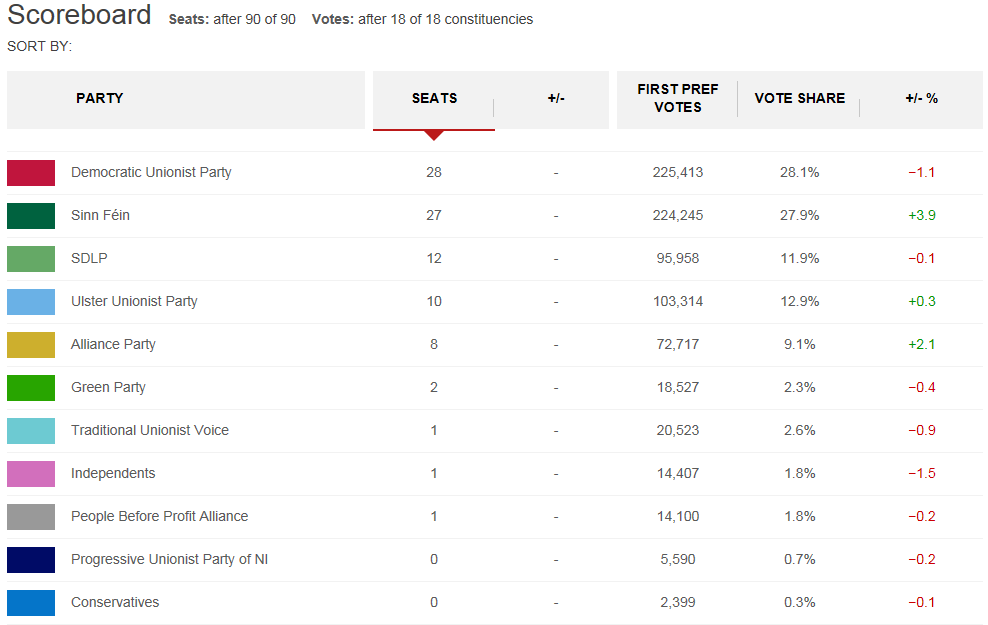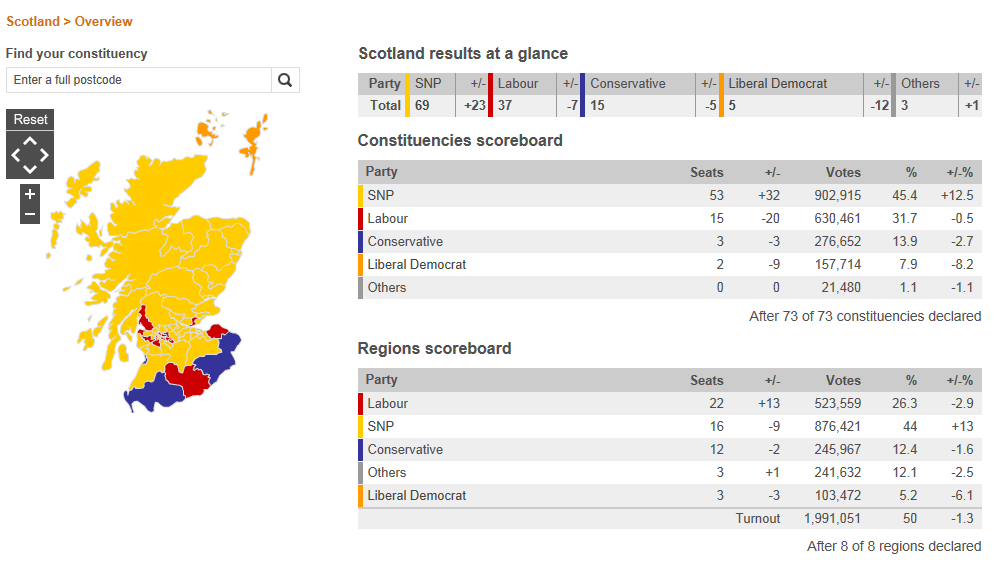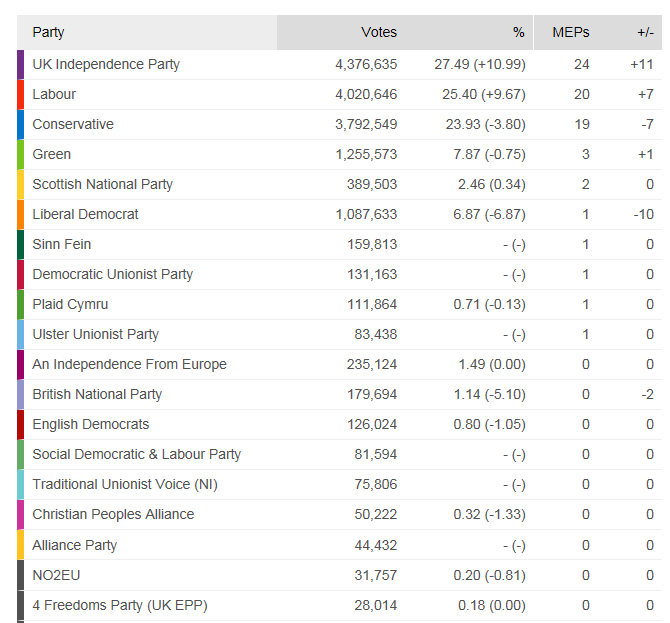Single Transferable Vote
Single Transferable Vote(STV)
- Used for the Northern Ireland Assembly, local government in Northern Ireland and Scotland
- Constituencies are multi-member
- Candidates are ranked in order of preference
- Candidates are elected if they receive a certain quota of votes, which is calculated as the total number of votes cast, divided by (number of seats available+1), then add 1
- Counting takes place in several rounds, the bottom candidate dropping out each time and votes for that candidate being transferred to second/third preferences
- This is a quota system
Example: 2017 Northern Ireland Assembly Election
Source: BBC News
Single Transferable Vote: Advantages
- Can be highly proportional
- Creates competition for candidates from the same party, so they can be judged on their own strengths
- Several representatives exist for people
Single Transferable Vote: Disadvantages
- Degree of proportionality can vary
- Single-party, strong government is very unlikely
- Could be divisive by creating competition between candidates from the same party
Additional Member System(AMS)
- This system is used for the Scottish and Welsh devolved governments
- Electors have two votes: one for a representative (for a constituency), one for a party (for a region)
- The winner for each constituency is the candidate with the most number of votes
- For the regional votes, divide the number of votes they got by the (number of constituencies won+1)
- Party with the highest number wins the seat
- For the rest of the seats, repeat this action but add any additional seats won
- This is a mixed system- partly pluralist (like FPTP) but partly proportional (where seats won reflects the percentage of votes in some way)
Example: 2011 Scottish Parliament Election
Source: BBC News
Additional Member System: Advantages
- Balances constituency representation against electoral fairness (proportionality)
- Possibility of single-party, strong government remains
- Allows for more voter choice- they could vote for two different parties
Additional Member System: Disadvantages
- High levels of proportionality are unlikely
- Creates confusion by having two classes of representative
- Constituencies are larger, so representation may be less effective
Party List
- Used in EU Parliament elections
- Voters vote for a party, not a candidate
- There are multimember constituencies
- Parties are allocated seats in proportion to the votes cast
- Seats are filled from the top of the party list downwards
- Closed list used in EU Parliament elections)- parties decide on who appears on the list and in what order. Open list- voters have some choice
Example: 2014 European Parliament Election (UK)
Source: BBC News
Party List: Advantages
- It is the most purely proportional system
- Electors identify with a whole region rather than just a constituency, so promotes unity
- Minority ethnic groups and women are more likely to become representatives if placed highly on the list
Party List: Disadvantages
- Small parties are more likely to do well, so leading to weak/unstable government
- Extremist parties get a foothold in representation
- Parties tend to decide who appears on the list and in what order, giving them too much influence
- The constituency link is weakened
Alternative Vote(AV)
- Used for local government by-elections in Scotland
- Voters rank candidates in order of preference for a constituency
- First preferences are counted- if a candidate gets over 50%, they are elected
- If not, the bottom candidate drops out, and voters’ second choices are added on to the other candidates
- This process is repeated until a candidate reaches 50%
- This system was proposed for Westminster elections in a 2011 referendum but was rejected by the public vote
Alternative Vote: Advantages
- Fewer wasted votes than in FPTP
- Winning candidates must win 50% of support, ensuring a broader range of views are considered
Alternative Vote: Disadvantages
- Outcome may be determined by the preferences of those who support extremist parties
- Winning candidates may be simply the ‘least unpopular’, if they win due to second, third (or lower) preferences
Supplementary Vote(SV)
- Used for London mayoral elections
- Voters rank candidates in order of first and second choice
- First preferences are counted- if a candidate gets over 50%, they are elected
- If not, all candidates drop out except for the top two, then second choice votes are added on to see who wins
- More proportional than FPTP, but not significantly. Known as a majority system
Supplementary Vote: Advantages
- Easy to understand and use (perhaps easier than AV)
- Fewer votes wasted than in FPTP
- Encourages consensus campaigning, due to the focus on second preferences
Supplementary Vote: Disadvantages
- Does not ensure that the winner is supported by over 50% of voters, unlike in AV (as both voter’s choices may be for candidates that drop out)
- May encourage voters to support the main party candidate as their supplementary vote, rather than their preferred candidate


